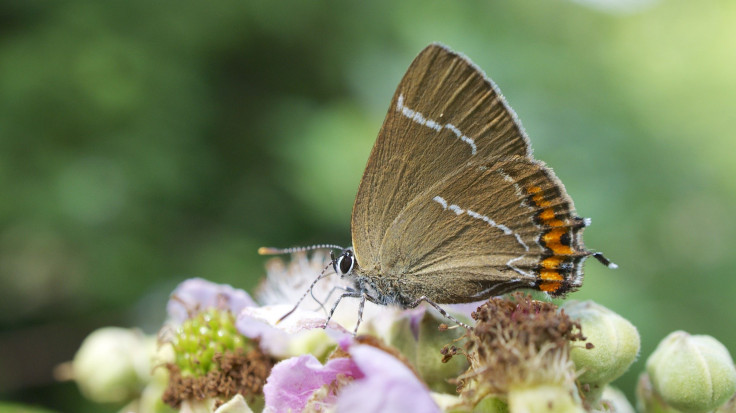Butterfly Eggs Discovered In Scotland Hold Promise For Species Comeback

Naturalists in Scotland may have found eggs from an endangered butterfly, which would mean the flying creature is breeding in the country for the first time in more than a century.
The group Butterfly Conservation reported the discovery Feb. 15, saying the eggs were found more than a week earlier on some wych elm trees in Lennel, which is right on the River Tweed that runs along southeastern Scotland’s border with England. The butterfly, a white-letter hairstreak, has brown wings with white streaks, black spots and an orange edge.
The European butterfly is not listed as being under threat at the International Union for Conservation of Nature, but it has experienced steep declines in some areas, including the United Kingdom. It has since become stable.
“Although this species shows a decline in a part of its European range, it is not believed to face major threats at the European scale,” according to the IUCN.
Conservation efforts throughout the U.K. have focused on the butterfly. Butterfly Conservation estimates that the butterfly’s population has dropped almost three-quarters over the last 10 years. That’s after earlier declines linked to Dutch elm disease, a fungus that was eating into the food supply for the species’ caterpillars.
“The discovery of these eggs is hugely significant as it not only confirms the white-letter hairstreak is breeding here, but one of the eggs was an old, hatched shell — so it looks like the butterfly could have been breeding here since at least 2016,” Iain Cowe said in the Butterfly Conservation report.
He had been the naturalist to report seeing an adult white-letter hairstreak last year, roughly 10 miles away northeast from the egg location. It was the first spotting in Scotland since 1884.
There had only been one before that, in 1859.
“Last year was an impossible find, but this year’s egg discovery is beyond anything we thought possible," Cowe said.
Ken Haydock, a volunteer who found the eggs, said his “hands were shaking.”
Before the group can say for sure that the butterfly is established in Scotland, it is waiting for more sightings.
© Copyright IBTimes 2024. All rights reserved.





















